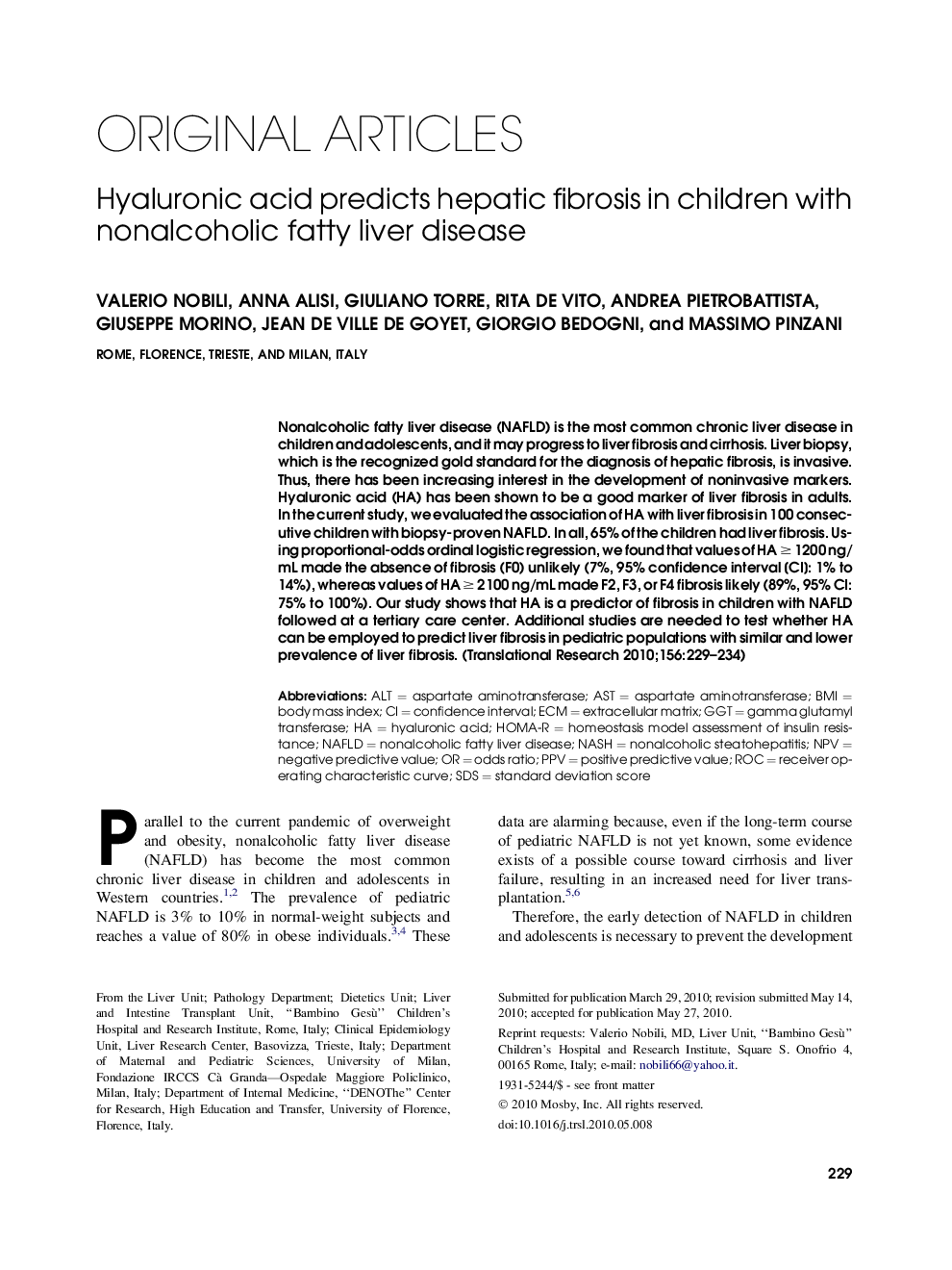| Article ID | Journal | Published Year | Pages | File Type |
|---|---|---|---|---|
| 3840925 | Translational Research | 2010 | 6 Pages |
Nonalcoholic fatty liver disease (NAFLD) is the most common chronic liver disease in children and adolescents, and it may progress to liver fibrosis and cirrhosis. Liver biopsy, which is the recognized gold standard for the diagnosis of hepatic fibrosis, is invasive. Thus, there has been increasing interest in the development of noninvasive markers. Hyaluronic acid (HA) has been shown to be a good marker of liver fibrosis in adults. In the current study, we evaluated the association of HA with liver fibrosis in 100 consecutive children with biopsy-proven NAFLD. In all, 65% of the children had liver fibrosis. Using proportional-odds ordinal logistic regression, we found that values of HA ≥ 1200 ng/mL made the absence of fibrosis (F0) unlikely (7%, 95% confidence interval [CI]: 1% to 14%), whereas values of HA ≥ 2100 ng/mL made F2, F3, or F4 fibrosis likely (89%, 95% CI: 75% to 100%). Our study shows that HA is a predictor of fibrosis in children with NAFLD followed at a tertiary care center. Additional studies are needed to test whether HA can be employed to predict liver fibrosis in pediatric populations with similar and lower prevalence of liver fibrosis.
